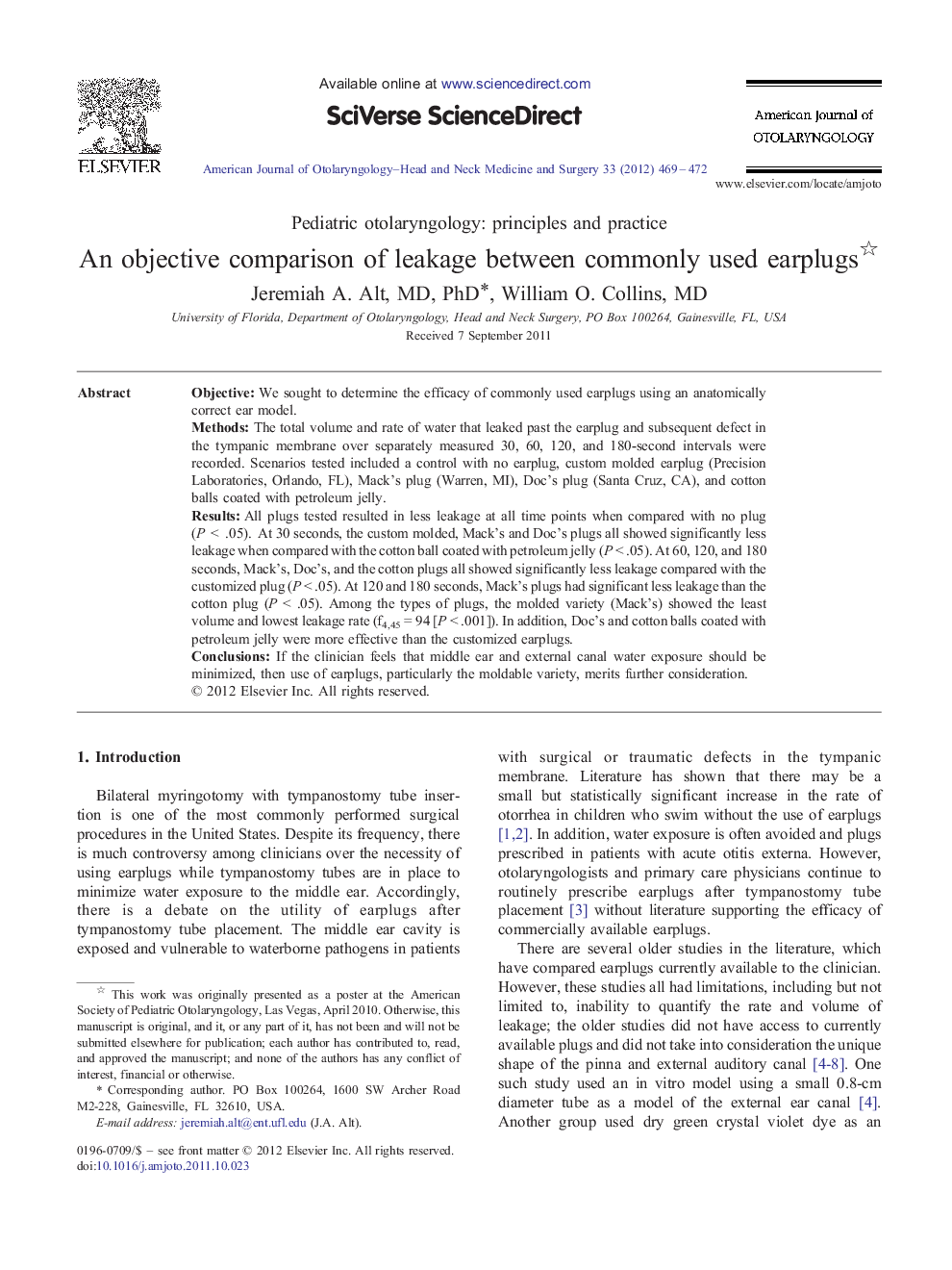| Article ID | Journal | Published Year | Pages | File Type |
|---|---|---|---|---|
| 4103944 | American Journal of Otolaryngology | 2012 | 4 Pages |
ObjectiveWe sought to determine the efficacy of commonly used earplugs using an anatomically correct ear model.MethodsThe total volume and rate of water that leaked past the earplug and subsequent defect in the tympanic membrane over separately measured 30, 60, 120, and 180-second intervals were recorded. Scenarios tested included a control with no earplug, custom molded earplug (Precision Laboratories, Orlando, FL), Mack's plug (Warren, MI), Doc's plug (Santa Cruz, CA), and cotton balls coated with petroleum jelly.ResultsAll plugs tested resulted in less leakage at all time points when compared with no plug (P < .05). At 30 seconds, the custom molded, Mack's and Doc's plugs all showed significantly less leakage when compared with the cotton ball coated with petroleum jelly (P < .05). At 60, 120, and 180 seconds, Mack's, Doc's, and the cotton plugs all showed significantly less leakage compared with the customized plug (P < .05). At 120 and 180 seconds, Mack's plugs had significant less leakage than the cotton plug (P < .05). Among the types of plugs, the molded variety (Mack's) showed the least volume and lowest leakage rate (f4,45 = 94 [P < .001]). In addition, Doc's and cotton balls coated with petroleum jelly were more effective than the customized earplugs.ConclusionsIf the clinician feels that middle ear and external canal water exposure should be minimized, then use of earplugs, particularly the moldable variety, merits further consideration.
